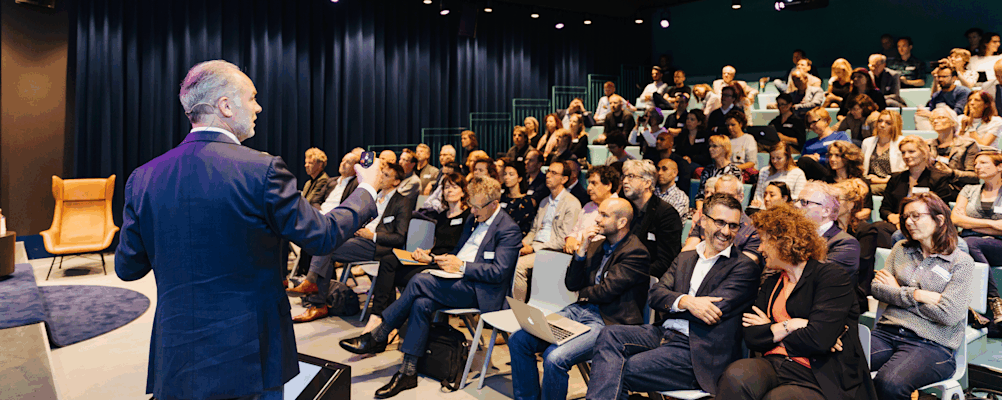CHARGE 2018 BRINGS CREATIVE PEOPLE AND IDEAS TOGETHER FOR THE CITY OF THE FUTURE
Last Thursday, 21 June was the day: CHARGE! In the Parool Theater in Amsterdam we organized an afternoon full of inspiration and information in collaboration with the Amsterdam Creative Industries Network. Researchers and Entrepreneurs presented new insights and example that could make metropolitan cities more livable, healthier and more sustainable. The afternoon was divided into two themes: Energy & Behavior and Smart Livable Cities. Here are a few takeaways!
Ruurd Priester (University of Applied Sciences) mostly talked about the need for energy transition and used Kate Raworth’s donut economy to have a look at this idea before making a case to bring together the 1% of “active go-getters” from different groups: the triple helix as well as the citizen, social institutions and SMEs. Jann de Waal (info.nl) and Carolien Gehrels (Arcadis) agreed: “Cooperation between all parties is important, it leads to a quicker and more successful solution.”

Difficult, new and unknown
The presentations from the Energy & Behavior section taught us that the creative industry is vital when it comes to bringing about and embracing technological solutions. Sven Jense (The Climate Cleanup) showed us a number of examples such as a hull for airplanes made of carbon and a building block that captures CO2, but also explained that these are not used yet because they are “difficult, new and unknown”. Eric Biermann (VanBerlo) talked about design as a way to encourage consumers into changing their behavior by taking into account their (subconscious) desires in the design process right from the start.
Goda Perlaviciute (University of Groningen) critically pointed out that internal values are a very important factor when it comes to the success of design that leads to changes in behavior; someone without strong internal values when it comes to the environment is easier to influence into recycling their coffee cup than someone who decides for themselves what they consider to be important for the environment. In a simple test, they found an increase of no less than 50% with regard to recycling in the former group, when the coffee cups had a “natural” look as opposed to a modern, attractive but unnatural look.

Inclusive digital city
During the second portion, Smart Livable Cities, Marleen Stikker (Waag) argued for the idea of an inclusive digital city with an open, transparent way of data usage that was aimed at humanity: “from Smart to Shared Cities”. Gert Franke (CLEVER⁰FRANKE) went on to give examples of interactive solutions for smart cities that make inhabitants a more active part of the smart city, and Wouter Vos (KuiperCompagnons) brought visions about livable cities from a urban design perspective to the table.
Martijn de Waal (Amsterdam University of Applied Sciences) talked about how smart livable cities should be designed – a complex situation, in which compassion is the leading principle. Sometimes that is something we need to actively look for, for example by triggering a discussion through games within the networks with different kinds of actors. “Cultural norms become more crucial when we recognize them as driving factors of what we want to be in the future”, panel members Carolien and Jann posited. The most important takeaway? Annika Fulop, project manager of Marineterrein in Amsterdam: “What I found most inspiring is that we shouldn’t see each other as competition, but that we should get to know each other and each other’s strengths better. These kinds of events contribute to that.”

Campus Amsterdam
The cherry on the CHARGE’s cake was the launch of Campus Amsterdam: the network of innovation districts, campuses and labs of the Amsterdam metropolitan area. Geleyn Meijer, Leo le Duc and Caroline Nevejan introduced this initiative. A beautiful example for other areas that can be used as a tool to encourage cooperation between different actors!
Photography: Bibi Veth


